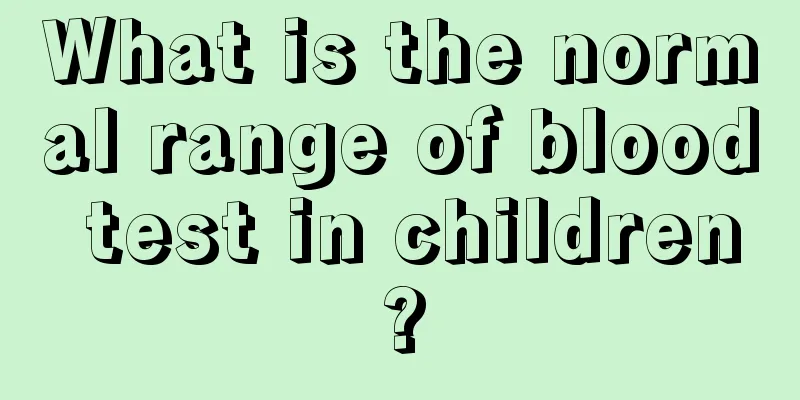What is the normal range of blood test in children?

|
A routine blood test is the most basic blood examination. Everyone needs to understand the composition of human blood. Human blood mainly consists of two parts, liquid and cells. The cells in the blood mainly include white blood cells and red blood cells. The purpose of a routine blood test is to understand the levels of these cells and thereby determine the disease. So, if it is a young child, what should be the normal range of blood tests? Normal range of blood test in children: Red blood cell system: The main function of red blood cells in the human body is to carry oxygen. If the red blood cells, hemoglobin, and hematocrit are all marked with "↓", it indicates the presence of anemia and the tissues may show signs of hypoxia. If "↑" shows an increase in red blood cells in the body, an increase in red blood cells is also abnormal. White blood cell system: It is abnormal if the white blood cell number shows “↑” or “↓” in the routine blood test. Its total number is within the "normal range". For example, the total white blood cell count of a normal newborn is (9-30) x 109/L, and the average is 20 x 109/L. With the increase of age, the normal value will gradually decrease. For example, for children aged 6 months to 6 years old, it is (6-15)ⅹ109/L, and the average is 10ⅹ109/L; for children aged 7 to 12 years old, it is (4.5-13.5)ⅹ109/L, and the average is 8ⅹ109/L. If the value exceeds the high value, inflammation is suspected, which is mostly bacterial infection. If the value is less than the low value, it may be viral infection or drug effect. The above refers to the total number of white blood cells. We should also further understand that white blood cells are composed of five types of white blood cells, each with its own function. Among them, the largest proportion is neutrophils (represented by the symbol N), accounting for about 50% to 70% (the percentage varies with age), and they mainly play the role of phagocytosis and killing bacteria. The second type is lymphocytes (represented by the symbol L), accounting for about 20% to 40%, which produce cytokines to destroy the bacterial structure and make the bacteria unable to survive. The third type of cell is monocytes (represented by the symbol M), which account for about 1% to 8% and produce antibodies. The fourth type of cell is eosinophil (symbol E), which accounts for about 0.5% to 5%. The proportion may increase when the body is allergic or infected by parasites. The last is the alkaliphilic granulocyte (symbol B), which accounts for about 0-0.75%. If the various proportions are not harmonious, it indicates that there may be some disease. Platelet system: Platelets (PL) are approximately (100-300) x 109/L. As we all know, the main function of platelets is blood coagulation. Without them, a small wound may put your life in danger. Generally speaking, the platelet count is the third key point that should be paid attention to when observing the test results. If the platelet count is low, the baby may have coagulation problems. |
<<: How to diagnose anemia in children’s blood routine test?
>>: Is it okay for children to eat fish roe?
Recommend
How does amblyopia develop in children?
If your baby has amblyopia, it will pose a great ...
Infant vascular nevus
Vascular nevus is a common phenomenon in infants....
How to cure indigestion in children?
In today's society, more and more children ar...
What to do if a two-year-old child has yellow hair
Children should have black hair, but some parents...
What to do if your child's gums are rotten
Nowadays, many children have bad teeth and many p...
The child was beaten because of chest pain
Nowadays, many parents send their children to kin...
What are the causes of vaginitis in children?
Gynecological diseases can be said to accompany w...
What is going on when the baby has a fever all over the body?
The quality of a baby's physique is determine...
How long does it take for the baby to replenish calcium deficiency?
In life, babies are particularly prone to calcium...
At what age do boys start to grow taller
Nowadays, children in every family are treasures....
At what age do children grow wisdom teeth?
Wisdom teeth are also called wisdom teeth. I beli...
The child has a lot of spots on his face
Children's skin is the best and looks very cu...
Three-year-old poops and there is blood when wiping his butt
For children, it is actually very easy to have bl...
Which eye drops are best for children?
Children are also a high-risk group for eye disea...
What to do if your baby coughs and vomits at night
Now many parents report that their babies’ low-gr...









